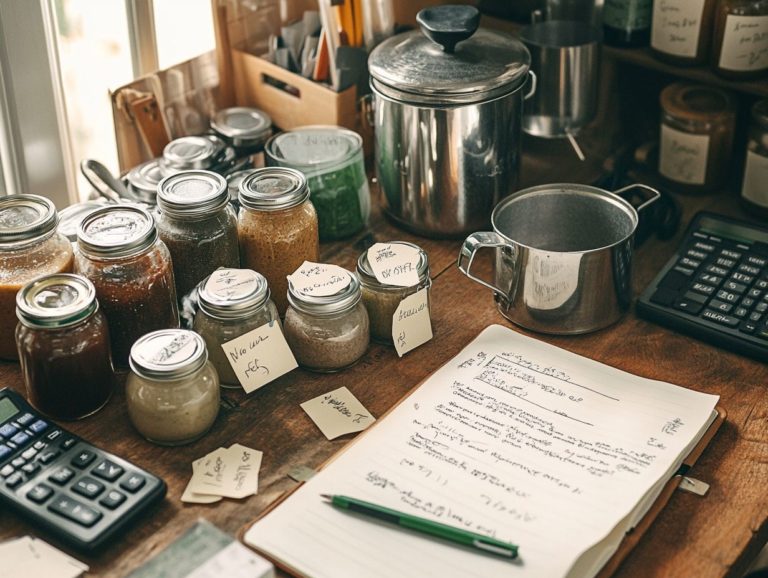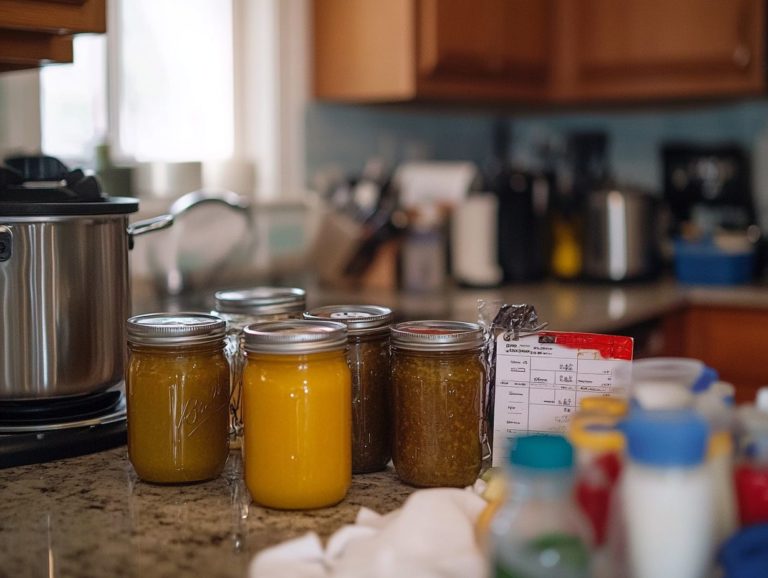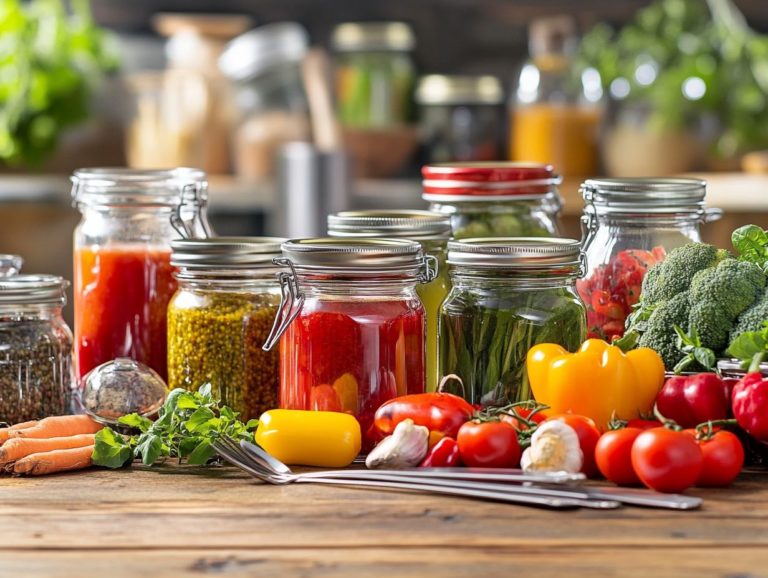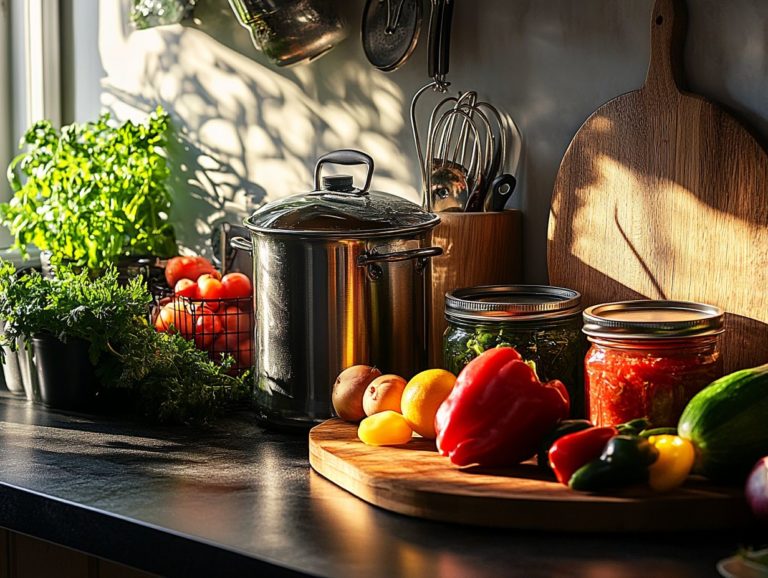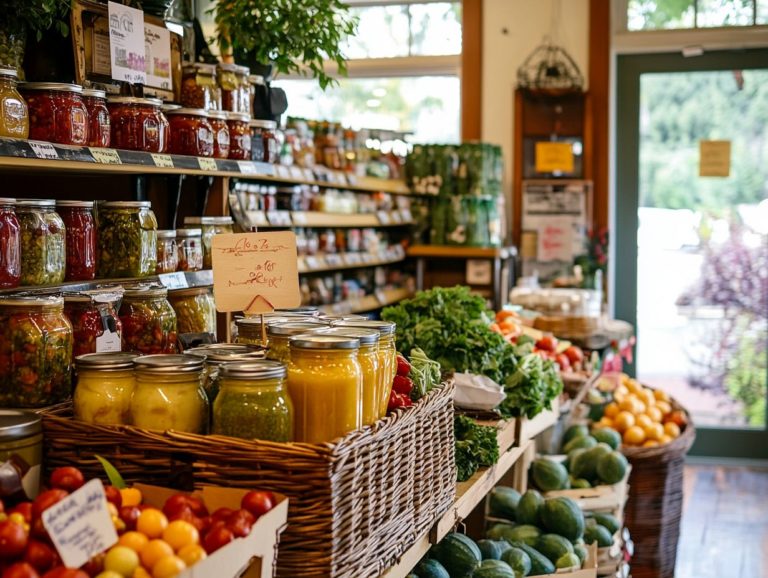The Future of Canning Equipment: Trends to Watch
Canning equipment is undergoing a remarkable transformation, driven by technological advancements and an increasing focus on essential sustainability practices. As both businesses and consumers pursue efficient, eco-friendly solutions, grasping current trends and potential future developments becomes essential.
This article delves into the latest innovations in automation, the emergence of sustainable options, and their implications for the canning industry. Whether you find yourself as a business owner or an avid home canner, this exploration will illuminate key considerations to help you adeptly navigate the exciting changes unfolding in canning technology.
Contents
- Key Takeaways:
- Current Trends in Canning Equipment
- Potential Future Developments
- Impact on the Canning Industry
- Considerations for Businesses and Consumers
- Frequently Asked Questions
- What trends in canning equipment will shape the future?
- How is automation changing the canning equipment industry?
- What role does sustainability play in the future of canning equipment, particularly in the context of environmental sustainability?
- Are there any new advancements in packaging technology for canned products?
- What impact will the rise of e-commerce have on the canning equipment industry?
- How will consumer preferences and demands, including the rising middle-class population, shape the future of canning equipment?
Key Takeaways:
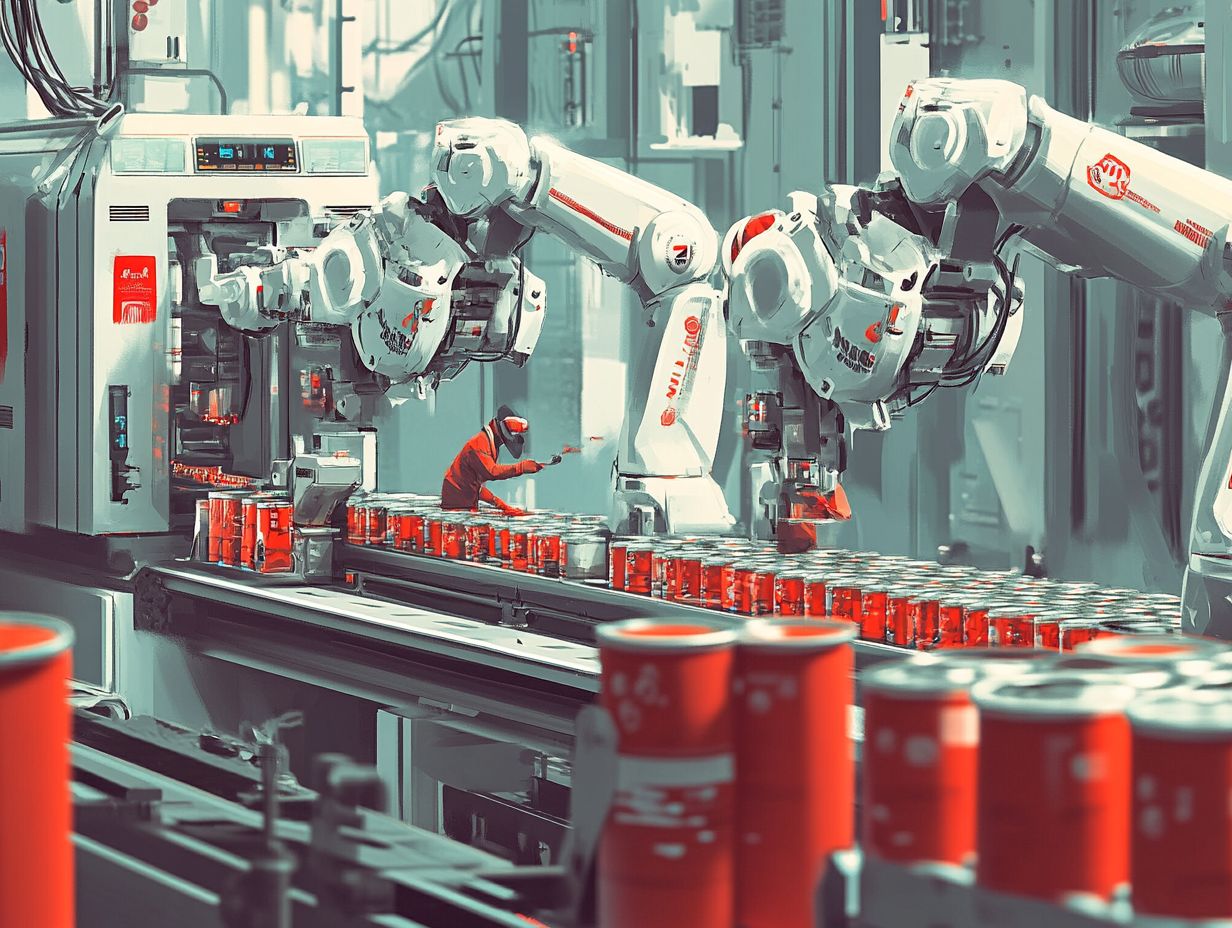
- Automation and technological advancements will continue to drive innovations in the canning equipment market, improving efficiency and reducing costs for businesses.
- Eco-friendly and sustainable options will become increasingly important in the canning industry, as consumers seek out environmentally responsible products.
- Businesses and consumers should carefully consider factors such as cost, efficiency, and sustainability before investing in canning equipment to stay competitive in the evolving market.
What is Canning Equipment?
Canning equipment encompasses the machinery and tools essential for sealing and preserving beverages and food products in cans. This equipment has gained significant importance in the food and beverage industry, driven by the increasing demand for innovative and sustainable packaging solutions.
The global canning equipment market is poised to reach an impressive valuation of US$ 20.15 Billion by 2033, expanding at a Compound Annual Growth Rate (CAGR) of 4.4% during the projection period of 2023 and beyond. This growth is fueled by the rising popularity of ready-to-drink products, local and craft beverages, and health-conscious consumers who prioritize convenience and on-the-go consumption of beverages.
This equipment is essential for keeping your favorite drinks fresh longer! It supports a wide array of beverages, including sparkling water and functional drinks enriched with vitamins and nutrients. As consumer preferences align with health and wellness trends, the significance of effective canning methods has intensified.
Advancements in canning technology, such as enhanced filling techniques and eco-friendly materials, have revolutionized the industry. These innovations enable producers to meet the burgeoning demand for both efficiency and environmental responsibility.
This trend satisfies the cravings of modern consumers while opening the door for innovative flavors and formulations that can be safely packaged and distributed.
Current Trends in Canning Equipment
The current trends in the canning equipment market reveal a notable shift towards sustainable practices and cutting-edge technology within the beverage industry. Manufacturers are adapting to the preferences of health-conscious consumers and the increasing demand for eco-friendly packaging solutions.
This transformation is further enhanced by the growing availability of innovative canning equipment, designed to accommodate a diverse range of products, from craft beer to sparkling water and functional beverages.
Automation and Technology Advancements
Automation and technology are changing the canning equipment market. They help improve efficiency and meet the growing demand for cans, from soft drinks to craft beer.
As these technological solutions evolve, they support improved production processes while addressing market challenges that impact competition. Packaging regulations are becoming stricter, and consumer preferences are shifting.
You ll notice significant enhancements in production efficiency through the integration of high-tech machines and AI-driven systems, which optimize your assembly lines and lower labor costs. For example, a leading soft drink manufacturer experienced a remarkable 30% increase in output after upgrading its canning facilities with automated technology.
By implementing data analytics tools software that analyzes data to help make better decisions you can effectively monitor compliance with strict industry regulations. This ensures that quality standards and sustainability initiatives are consistently upheld.
These advancements streamline your operations and help your company adapt quickly to shifts in consumer demand, underscoring the crucial role automation plays in modern canning practices.
Eco-Friendly and Sustainable Options
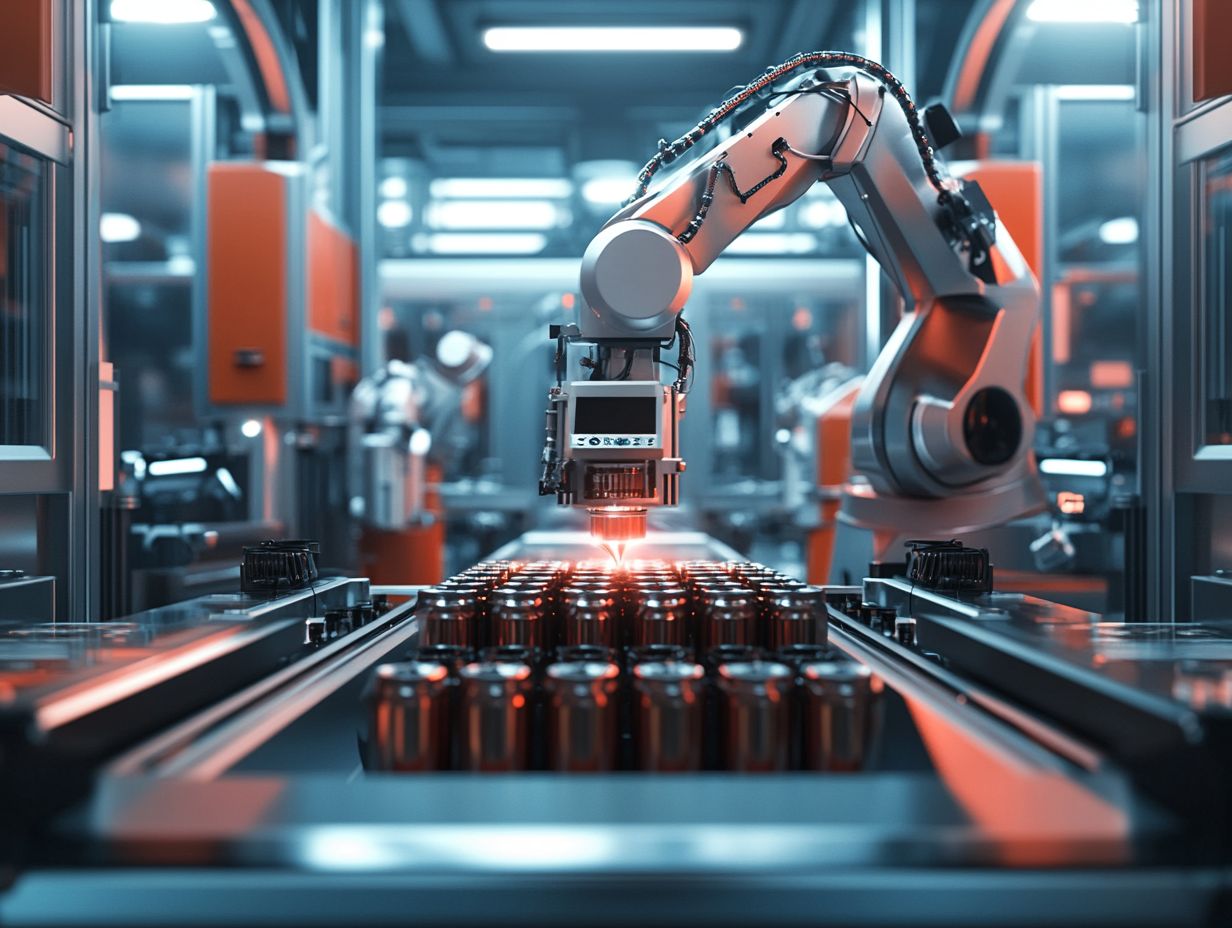
In today’s world, health consciousness and environmental awareness are growing fast. Everyone wants eco-friendly and sustainable options in canning equipment.
Beverage manufacturers feel the pressure to adopt practices that minimize their environmental footprint. This trend resonates with the health and wellness movement and addresses the growing concern for sustainable packaging, especially as aluminum cans are favored for their recyclability.
Innovative solutions are emerging that cater to the aging population’s influence on market trends and millennials who prioritize sustainability. Manufacturers are now providing canning solutions crafted from biodegradable materials and energy-efficient machines that consume less water and generate less waste.
Enhanced designs with user-friendly features appeal to older consumers, while vibrant packaging captures the attention of younger audiences. These developments showcase a commitment to reducing plastic dependency and fostering a greener future, reflecting the industry’s recognition of its vital role in addressing global environmental challenges.
Potential Future Developments
The potential future developments in the canning equipment market are shaped by key growth drivers, including technological innovations and shifting consumer behavior. These factors are expected to create substantial growth opportunities over the next decade.
As beverage manufacturers like Longbottom & Co. and SPC Australia lead innovations and adapt to the evolving preferences of health-conscious consumers, the industry is on the brink of significant transformations that could redefine its landscape.
Predicted Changes in Canning Equipment
Predicted changes in canning equipment stem from the need to tackle market challenges and seize opportunities presented by new product launches aimed at health-conscious consumers. These cater to evolving preferences, especially in functional beverages and ready-to-drink products.
This evolution is likely to feature advancements in automated systems that enhance efficiency and cut labor costs. You may also encounter stricter packaging regulations focused on sustainability, pushing you to incorporate recyclable or biodegradable materials in your designs.
For example, the recent rollout of lightweight aluminum cans by leading brands like Coca-Cola and PepsiCo highlights a shift toward environmentally friendly options.
In this competitive landscape, it’s crucial for you to embrace cutting-edge technologies, such as smart canning lines that provide real-time monitoring and quality control, ensuring product consistency while adhering to regulatory standards.
Act now to embrace these changes, or risk falling behind.
Impact on the Canning Industry
The recent advancements in canning equipment have significantly impacted the canning industry, reshaping production processes and influencing how consumer behavior is analyzed. As beverage manufacturers respond to the growing demand for sustainable and innovative packaging solutions, you’ll be excited to see this transformation reflected in the rising consumption of beverage cans, particularly in categories like sparkling water, craft beer, and non-alcoholic beverages.
Effects on Production and Consumers
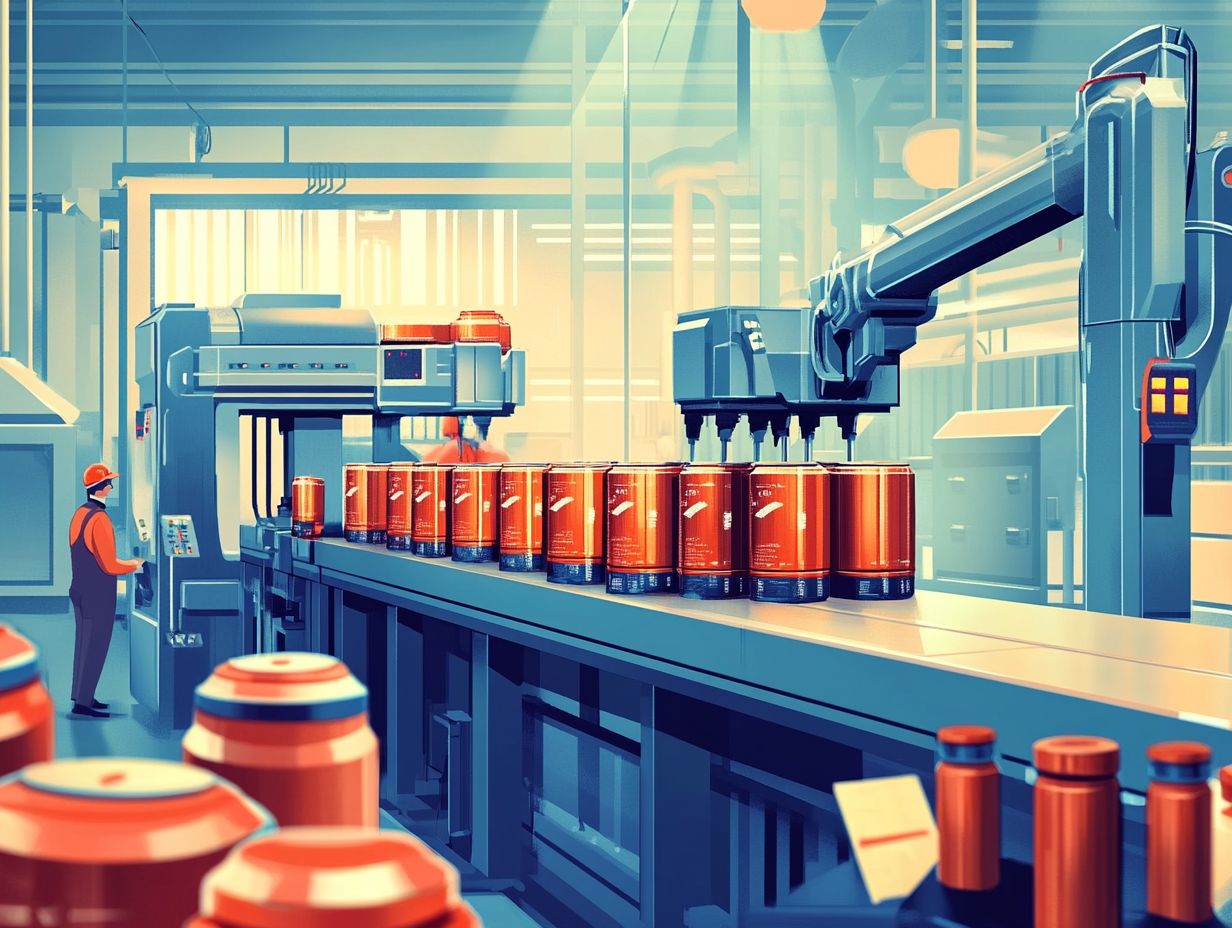
The impact of advancements in canning equipment on production and consumer behavior highlights the crucial need to make manufacturing match what you want, especially with the health and wellness trends fueling the demand for ready-to-drink products. As production efficiency improves, beverage manufacturers are poised to meet the expectations of health-conscious individuals who prioritize convenience.
These technological strides streamline bottling processes and minimize waste, resulting in lower production costs. This enables manufacturers to present a greater variety of healthy, ready-to-drink options at competitive prices.
Market analysis indicates a noticeable shift toward beverages enriched with natural ingredients, catering to those who appreciate both nutrition and flavor. This evolving landscape shows that you, as a consumer, increasingly favor on-the-go solutions that uphold quality.
Enhanced canning methods and shifting preferences guide the industry toward innovative solutions that fulfill your demand for both efficiency and health.
Considerations for Businesses and Consumers
When exploring investment opportunities in the canning equipment market, evaluate several pivotal factors that can profoundly impact your decisions and strategies.
Key considerations include emerging market trends, technological advancements, and the increasing demand for sustainability in packaging. All of these are shaping the future landscape of the food and beverage industry.
Being aware of these elements will enable you to make informed choices that align with both current needs and future aspirations.
Factors to Consider Before Investing in Canning Equipment
Before you invest in canning equipment, it’s essential to weigh several critical factors, such as investment opportunities, market challenges, and the significance of automation using machines to do tasks instead of people in canning processes. Understanding these elements can profoundly impact your operational efficiency and market success.
Among these factors, the level of automation stands out as pivotal. Advanced machines can significantly lower labor costs and boost production speed. For instance, if you adopt automated canning lines, you may find yourself well-equipped to handle surges in demand during peak seasons.
However, don t overlook potential market challenges like fluctuating raw material costs and strict regulatory requirements, which can complicate your decision-making process. Staying informed about technological advancements will enable you to make educated choices that optimize both quality and sustainability traits that today’s eco-conscious consumers increasingly prize.
Frequently Asked Questions
What trends in canning equipment will shape the future?
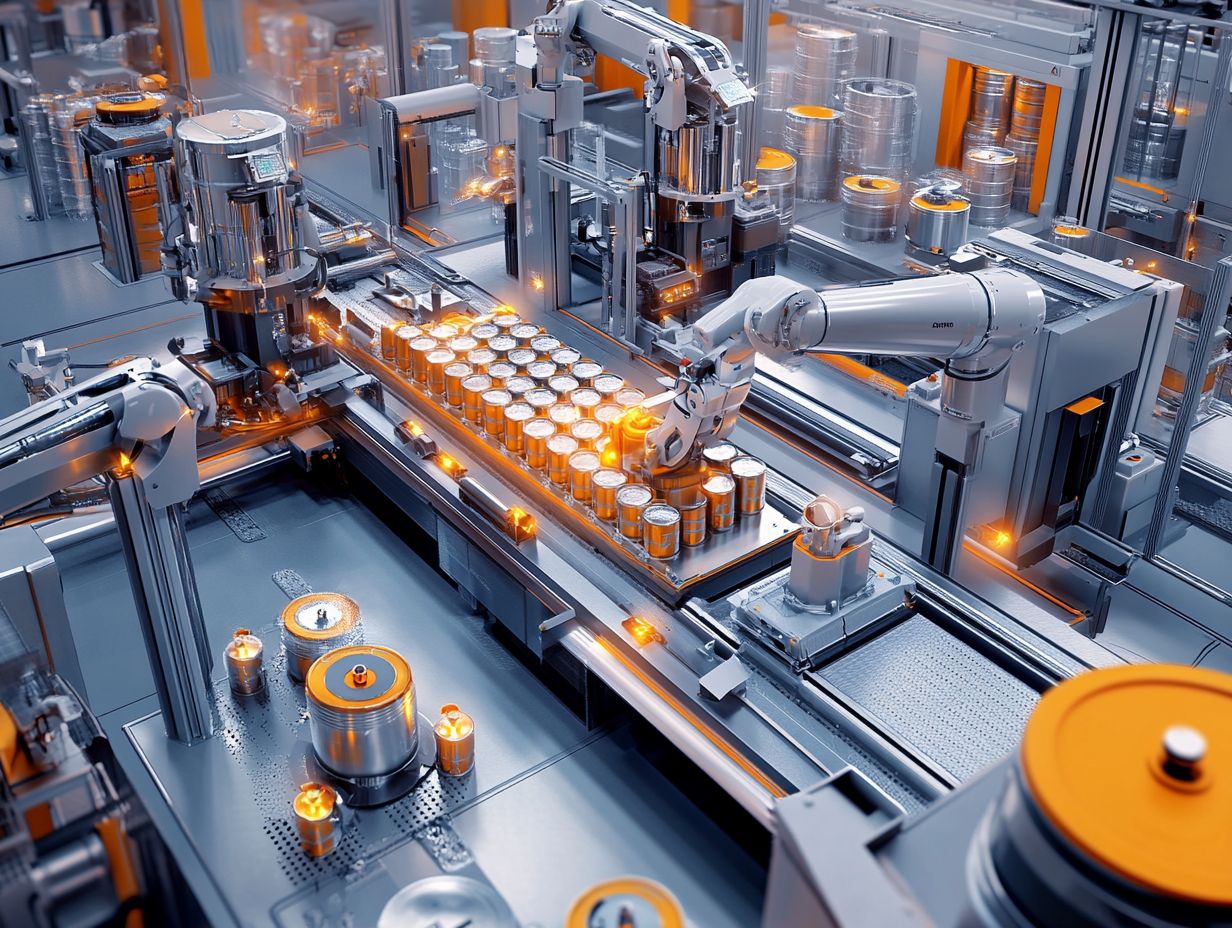
Key trends in canning equipment expected to continue in the future include increased automation and digitization of processes, the use of sustainable and eco-friendly materials, and the development of smart packaging solutions.
Stay tuned for more exciting updates in canning technology!
How is automation changing the canning equipment industry?
Automation is transforming the canning equipment industry. Machines and smart technology boost efficiency and speed in production.
What role does sustainability play in the future of canning equipment, particularly in the context of environmental sustainability?
Sustainability is crucial in canning equipment. The focus is on reducing waste and using renewable energy.
Are there any new advancements in packaging technology for canned products?
Exciting advancements are reshaping packaging technology! Smart and interactive packaging enhances consumer engagement and ensures product quality.
What impact will the rise of e-commerce have on the canning equipment industry?
E-commerce is booming! It significantly increases the demand for canning equipment as more businesses seek cost-effective packaging solutions.
How will consumer preferences and demands, including the rising middle-class population, shape the future of canning equipment?
Consumer choices are evolving. Healthy, sustainable packaging is driving innovation in canning equipment.

